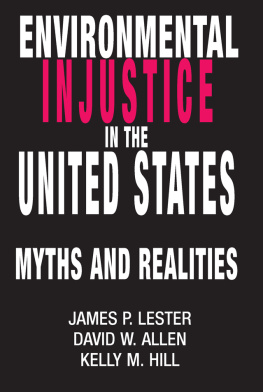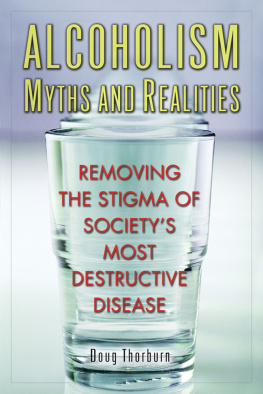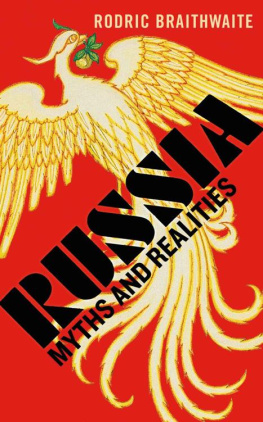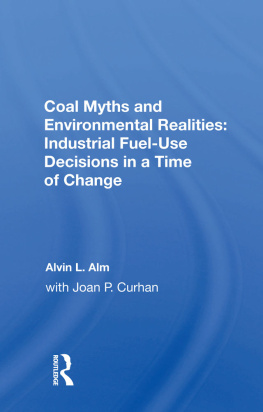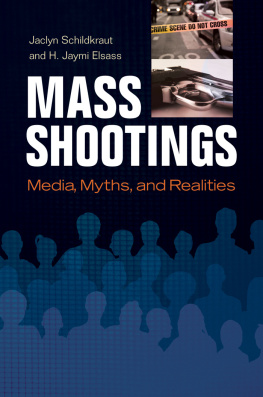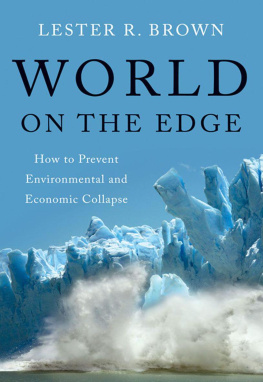Environmental Injustice in the United States
Environmental Injustice in the United States
Myths and Realities
James P. Lester
Colorado State University
David W. Allen
Colorado State University
Kelly M. Hill
former policy specialist, National Conference of State Legislatures
First published 2001 by Westview Press
Published 2018 by Routledge
711 Third Avenue, New York, NY 10017, USA
2 Park Square, Milton Park, Abingdon, Oxon OX14 4RN
Routledge is an imprint of the Taylor & Francis Group, an informa business
Copyright 2001 Taylor & Francis
All rights reserved. No part of this book may be reprinted or reproduced or utilised in any form or by any electronic, mechanical, or other means, now known or hereafter invented, including photocopying and recording, or in any information storage or retrieval system, without permission in writing from the publishers.
Notice:
Product or corporate names may be trademarks or registered trademarks, and are used only for identification and explanation without intent to infringe.
Library of Congress Cataloging-in-Publication Data
Lester, James P., 19442000
Environmental injustice in the United States: Myths and realities. / James P. Lester,
David W. Allen, and Kelly M. Hill.
p. cm.
Includes bibliographical references and index.
ISBN 0-8133-3819-0
1. Environmental justiceUnited States 2. Environmental justicePolitical aspects
United States. 3. Social justice. I. Allen, David W. II. Hill, Kelly M. (Kelly Marie)
III. Title.
GE180 .L47 2000
363.7'05'793dc21 00-043787
ISBN 13: 978-0-8133-3819-4 (pbk)
Dedications
As former Prime Minister Margaret Thatcher once said, "Truth is too precious to become the slave of fashion." I dedicate this book to those students of mine who have an inquiring mind and the ability to question conventional thinking about public policy issues.
James P. Lester
I dedicate this book to my father, W. R. Allen, now deceased, and my brother, Robert J. Allen, for their infinite patience and encouragement through the years. Part of this book belongs to Beverly Blair Cook, Cornelius Cotter, and James Gibsonall of whom taught me my trade yet remain blameless for what I did with the lessons. I would also like to thank John Albright, Manfred J. Enssle, and Thomas Knight, who, collectively, listened to the story of the project more times than anyone has a right to expect. Finally, this book is for W. B. Yeats, Dylan Thomas, and Lawrence Ferlinghettisimply because you cannot read quantitative literature all the time and remain sane.
David W. Allen
Dedicated to the memory of Weldon K. Hillmy grandfather, my mentor, my friend.
Kelly M. Hill
In memorium
James P. Lester, 1944-2000
The expression "environmental racism" is defined as "race-based discrimination in environmental policymaking; race-based differential enforcement of environmental rules and regulations; the intentional targeting of minority communities for toxic waste disposal and transfer and for the siting of polluting industries; and the exclusion of people of color from public and private boards and commissions, regulatory bodies, and environmental nonprofit organizations" (Collin, 1993).
Although the issue of environmental racism has existed at least as long as the environmental movement itself, it received serious attention only in the 1990s. Indeed, African Americans in Louisiana and Mississippi contend that state decisions involving hazardous waste treatment plants have had the effect of unfairly exposing them to more toxic pollutants than is the case for white citizens. They assert that the state's permit procedures, which are supported by federal money, are partly to blame. These claims caused Bill Clinton's administration to agree to investigate complaints that Louisiana and Mississippi were violating the civil rights of African Americans by permitting industrial pollution in their neighborhoods at a rate far greater than is the case for white neighborhoods. Specifically, the federal Office of Civil Rights, located within the U.S. Environmental Protection Agency (EPA), notified the two states in question in October 1993 that it had opened an investigation under the 1964 Civil Rights Act, which bars discrimination in federally funded programs.
In contrast to the argument that prompted an investigation under the 1964 Civil Rights Act, others argue that state officials are not deliberately steering pollution toward black communities. Rather, factors other than racismsuch as the cost of land, population density, and geological conditionshave dictated the location of such noxious facilities. At any rate, in 1992 EPA established the new Office of Environmental Equity to address issues associated with environmental racism, and on February 11, 1994, President Clinton issued Executive Order No. 12898, requiring federal agencies to avoid inflicting disproportionate environmental harms on minorities and the poor.
Despite growing interest in this thesis, until the mid-1990s there had been limited systematic researchwhether at the state, county, city, or neighborhood (i.e., census tract or ZIP code) levelsthat examined the idea of environmental injustice. Most empirical work has focused on the disparities in environmental quality caused by the siting of industrial and waste disposal facilities in black and Hispanic communities. However, much of the current literature does not pay sufficient attention to the distinctive social, economic, and political forces that affect these siting decisions; neither does it rely upon a rigorous assessment of the unique effects of each of these variables on environmental quality outcomes. Such an analysis is essential in order to understand the race-and class-based equity issues associated with environmental policy. Thus, the fundamental purpose of this book is to provide systematic insight into the social, economic, and political dynamics of environmental decisionmaking and the impacts of those decisions on minority and poor communities.
During a five-year project such as this, one incurs many debts. The idea for this book began in a graduate seminar, "The Politics of Growth and the Environment," taught by James Lester in 1992.
David Allen joined the project in 1994 with a grant from the College of Liberal Arts at Colorado State University in Fort Collins. This grant enabled us to hire a research assistant and to begin the process of collecting data and reading existing work on the topic; Kelly Hill was very helpful in this regard. In addition, she also prepared much of .
The Western Political Science Association (WPSA), through its annual meetings in 1994, 1995, and 1996, provided an outlet for presenting preliminary research results. We are grateful to Professor Debra Salazar of Western Washington University for organizing a panel on environmental justice at the 1994 WPSA meetings and including us on that panel. Professor Sheldon Kamieniecki of the University of Southern California allowed us to organize another panel at the 1995 annual meeting, and Professor Jane Bayes of California State University-Northridge also provided much support through her role as program chair for a similar opportunity at the 1996 meeting. The WPSA meetings in spring 1999 allowed us to present our complete findings and to discuss and compare our results with other environmental policy scholars, such as Christopher Foreman (of the Brookings Institution) and Evan Ringquist (of Florida State University). We are especially grateful to Professor Ringquist for sharing his results with us and for challenging our findings on several instances. Finally, we are very grateful for the support and encouragement we received from Loren Crabtree (provost) and Wayne Peak (chair of the political science department) at Colorado State University. Any errors or omissions in this book are the responsibility of the authors.


